The beauty of an Irish place name is that it usually describes something. Back in a time when we were pretty much left to ourselves, local landmarks like rivers, hills, forts, and so on, were used to provide reference points. Every single field, rocky outcrop or bend in a stream was named locally for easy identification.
People’s names were also useful – maybe a local chieftain long forgotten, or a local saint, lent their name to a meeting place or physical feature.
Later, our various ‘visitors’ down through the centuries – Vikings, Anglo-Normans, English – made contributions either by introducing new names or adapting local ones.
Roll on to 1824 when the British began the first Ordnance Survey of Ireland. The intention was to map the land for tax and ownership reasons so details of every village and townland were required. Of course Irish was pretty much an oral language and very few place names had been recorded. To be fair, efforts were made to research local traditions and documentary evidence but, in the end, the names were written phonetically in English. This meant that although many places kept their beautiful sounding names, the meanings were lost – its only by looking at the Irish version that we can understand their origins.
Trivia moment
Irish is actually one of 6 Celtic languages. The others are Scottish Gaelic, Manx (Isle of Man), Welsh, Cornish and Breton.
Before we start…
*Nowadays, Irish signposts present place names in two versions – English (usually in CAPITALS) with the Irish version above it in italics. About 90% of those place names, I’m delighted to say, are still of Irish language origin.
*You’ll notice that most place names have 2 parts – a prefix (at the beginning) and a suffix (end). One part usually refers to a physical or man made feature, while the other part describes it further by referring to its size, or its owner, etc.
*By way of explanation I’m using the following ‘formula’:
ENGLISH NAME ON SIGNPOST Irish name Irish explanation (if necessary) (Literal English Translation)
Confused yet?
Let’s get going….
I’ve selected 10 common words that you’ll find throughout the country.
1. Bally
This is a very common prefix.
It comes from baile, meaning town or homestead. However, as there were so few towns way back in the past, it probably usually refers to home.
BALLYMORE Baile Mór mór = big (Big Town / Home)
BALLYDUFF An Baile Dubh dubh = black (Black Village)
BALLYCULLEN Baile Uí Cuilinn cuilinn = holly – so there were probably lots of holly bushes in the area
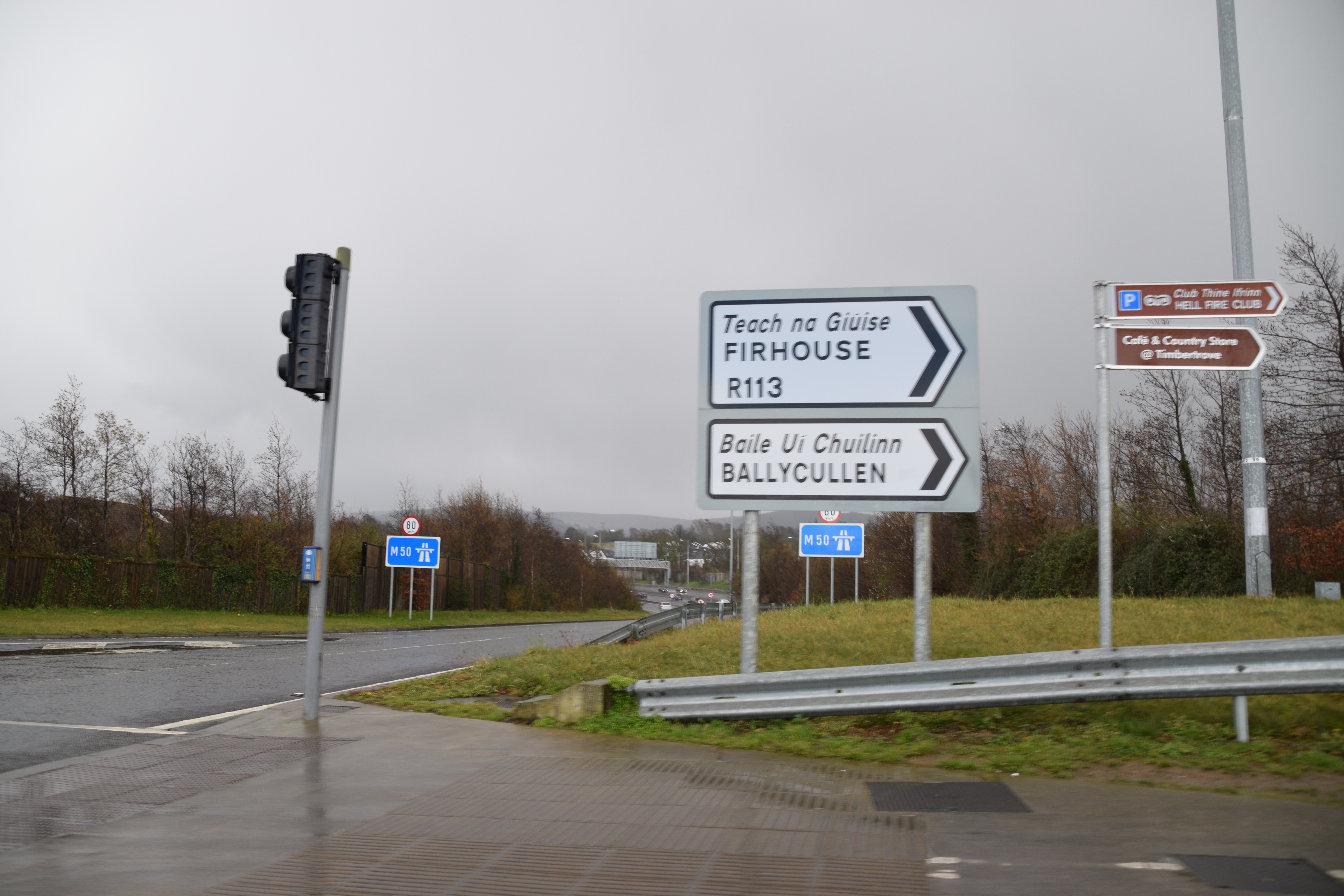
Sometimes Bally is at the end of the name:
SHANBALLY An Seanbhaile sean = old (The Old Town / Homestead)
2. Kil
This stems from either coill (meaning wood) or cill (meaning church).
This really comes down to studying local maps – looking for either an old church or woodland
KILKENNY Chill Chainnigh Chainnigh or Canice was the saint who founded the town (Canice’s Church)
KILLARNEY Cill Airne Airne = sloe berries, so this one probably refers to a wood rather than a church (the wood of the sloes)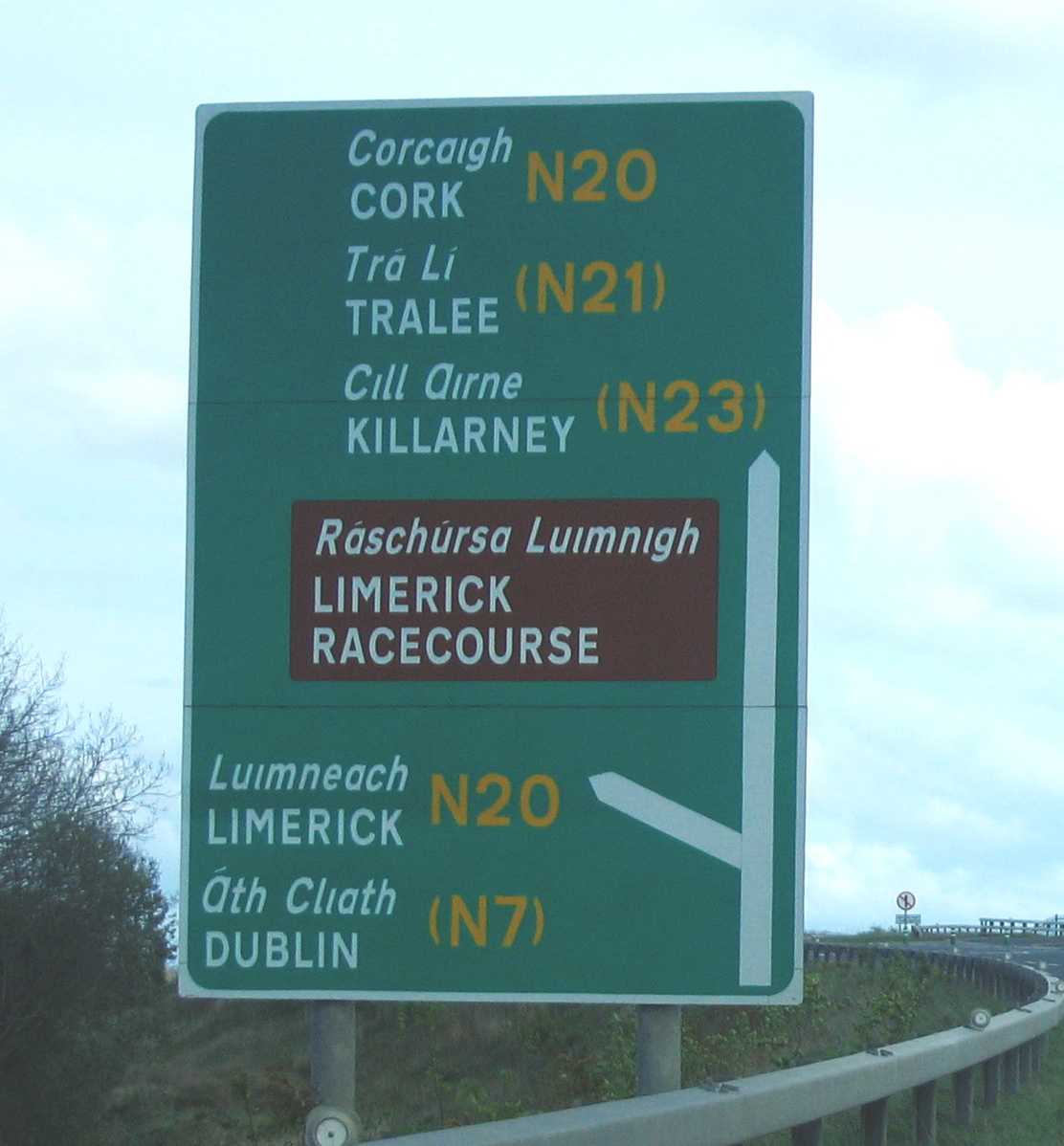
SHANKILL Seanchill (old wood or church) Sometimes we just can’t tell which it is!
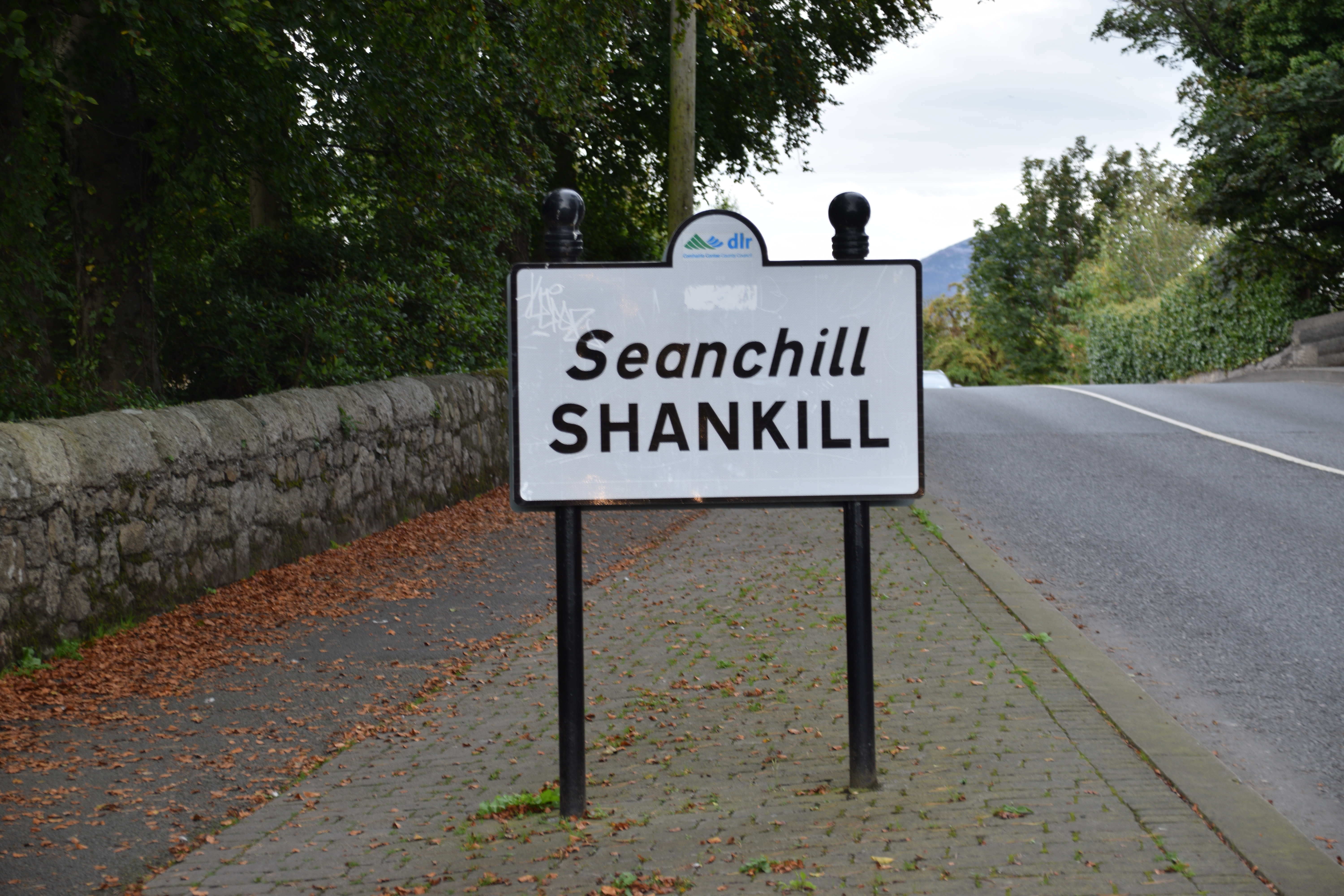
3. Dun / Doon
Dun and the less common Doon come from Dún
A Dún was an important fort – usually belonging to a king or chieftain (we may not know anything about these people)
DUNQUIN Dún Chaoin Caon is an unknown person (Caon’s Fort)
DUNGARVAN Dún Garbhán Garbhann was an Irish 7th century saint. (Garbhann’s Fort)
DOONBEG Dún Beag beag = small (Small Fort)
4. Rath
A Ráth was an earthen ringfort. There were thousands scattered across the country although most have now vanished due to farming and urbanisation. The majority seem to have been for domestic purposes – family dwellings or animal enclosures.
RATHNURE Ráth an Iúir iúir = yew (Ringfort of the Yew Trees)
RATHCOOLE Rath Cuil Cuil could be Cumhaill (name) or coill (wood)
RATHMICHAEL Ráth Michíl (Michael’s Ringfort)

5. Clon
This comes from cluain, meaning meadow
CLONTARF Cluain Tarbh tarbh = bull (Meadow of the Bull)
CLONSILLA Cluain Saileach saileach = willow (Meadow of the Willow)
CLONMEL Cluain Meala meala = honey (Honey Meadow)
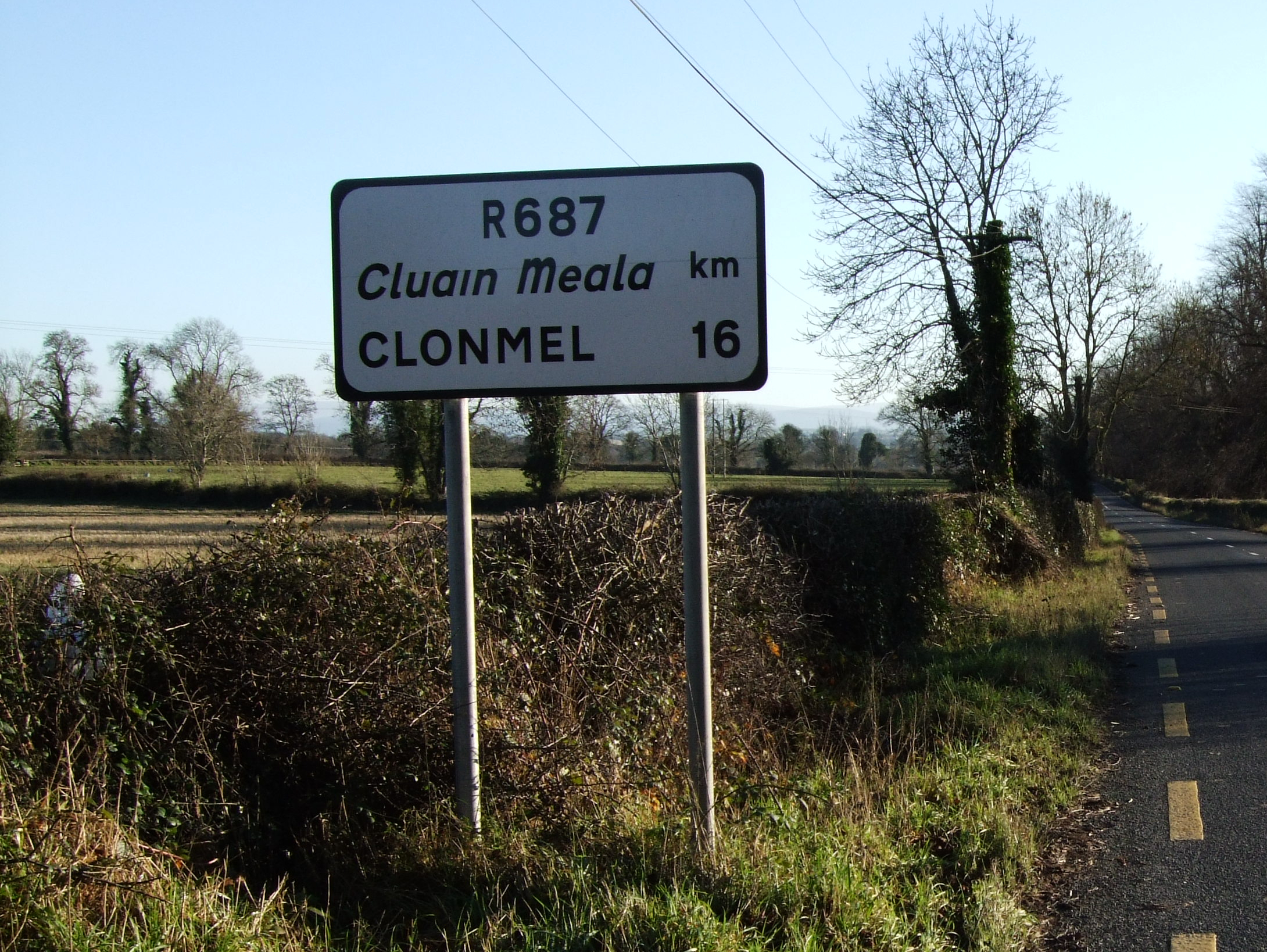
6. Bun
Bun means foot or end and often refers to the mouth of a river
BUNMAHON Bun Machan Machan is the name of a river, which flows into the sea at this Waterford village, so in this case the name means “at the end of the Machan”
BUNCLODY Bun Clóidí (End of the River Clody)
BUNBEG An Bun Beag beag = small (The small River Mouth)
7. Carrick / carrig / cargy
Carrick and its variations come from carraig meaning a rock
CARRICKBEG An Charraig bheag (The little Rock)
CARRIGALLEN Carraig Álainn álainn = beautiful (Beautiful Rock)
BALLYNACARGY Baile na Carraige (Town of the Rocks)

8. Knock
Knock comes from cnoc which is a hill
KNOCKADERRY Cnoc an doire doire = oak (Hill of the Oak)
KNOCKBOY An Cnoc Buí búi = yellow (Yellow Hill)
KNOCKLYON Cnoc Lín lín = flax – so flax obviously grew here at some stage

9. Tra
Trá is a beach or strand
TRAMORE Trá Mhór mór = big or great (The Great Strand)
TRALEE Trá Lí Lí = Lee (local river)
FINTRA Fionntrá fionn = fair or white (White Beach)

10. Glen
You probably recognise this one from our Scottish neighbours. Glen comes from Gleann meaning a glen or valley
GLENDALOUGH Gleann Dá Loch Dá =2 loch = lake (Glen of the 2 Lakes)
GLENAGEARY Gleann na gCaorach caora = sheep (Glen of the Sheep)
Have you been paying attention? So cuilinn is……….?

That’s right …… holly – this is Glen of the Holly
Why don’t you try these ..
Ballyjamesduff ?
Clonmore ?
Kilmichael ?
Dunmore ?
Ballyjamesduff Baile Shéamais Dhuibh (The Home of Black Seamus)
Clonmore Cluain Mhór (Big Meadow)
Kilmichael Cill Mhícil (Michaels Church)
Dunmore Dún Mór (The big Fort)
We’ve over 60,000 towns, villages and townlands but that’s probably enough for today!!!
♦♦♦♦♦♦♦♦♦♦

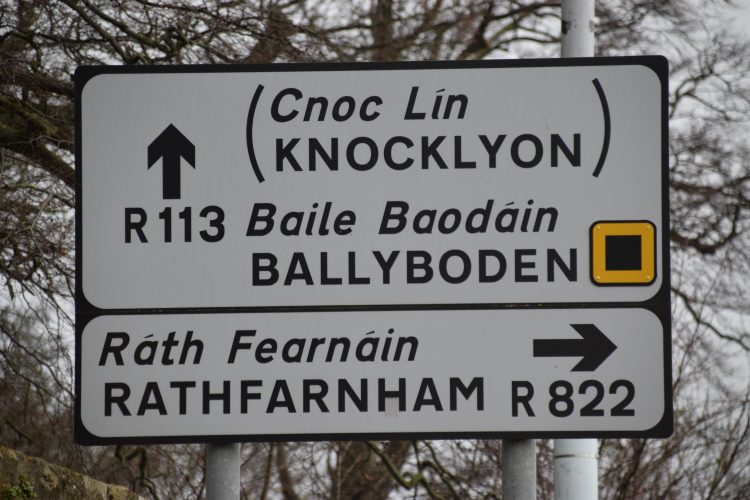
hahaha I know I know, its adjustment time for me but by now even speak a few words of Breton, my town is Pluvigner or in Breton Pleuwigner pleu comes from plu parish, wigner from guigner or St Guigner as in our church, the Irish monk who got away from St Patrick and came here to start this town. Kenavo!
I don’t see any similarities there between Breton and Irish words. Don’t know anything about Breton… are there many speakers? There actually is a St. Guigner converted by Patrick!!! He doesn’t sound very Irish does he! 😂
The story is from is my blog ” the son of an Irish king named Clyton who was made Christian by St Patrick,and came here to evangelize the area in around 406AD” https://paris1972-versailles2003.com/2017/07/24/my-new-home-of-pluvigner-in-the-morbihan-breton-xviiii/
He certainly sounds like a VIP in those there parts! Well done for making the Irish link!
i am sure here since 406 a lot has change and we do have an interceltique festival with many celtic nations which now could not be held in Aug this year maybe::: https://www.festival-interceltique.bzh/les-nations-celtes/
Ah and to answer your question, there is about 700K speakers and it is taugh in schools Breton.
Sounds like the language has good support.
oh yes very much so and proud. still like to be a duchy ::)
Whewww. Too much learning. Time for a Guinness. Ha Ha. Thanks for explaining a wee bit of Gaeilge. Every time we visit, we try to decipher how the English version came from the Gaelic. Say well Marie. Allan
You only had to read it!!! It would take a fair bit of Guinness to put it all together!!! 🍺 Its actually a great way to pick up a few words. We’re all doing ok here… mind yourselves. XXXMarie
It’s not easy, is it? Especially when the prefix is sometimes a suffix. All very interesting though and I would be happy to have more – when you have time that is!
And then throwing in variations in spelling and grammatical rules…. it can be a minefield. At yet so much is recognisable when you know a few basic words. I could certainly do more at some stage – but don’t want to drive Kagould17 / Allan to more Guinness 😂
You’ve answered a lot of questions I had about the names, especially in the Irish-speaking part of Donegal where the road signs and shops had most of the place names in Gaelic. This caused a few problems with programming our GPS, as it did not speak Irish, and we had no idea what the English version of the names were.
Yes the Gaeltacht (Irish speaking) areas just have Irish signs. I hope you’d a chance to hear Irish spoken in Donegal. There are differences throughout the country. I was raised in Dublin but my parents were from the Donegal Gaeltacht. If they helped me with my Irish homework, the teachers could never understand it the following day!!
Very interesting, I didn’t know most of those meanings. I think if I were driving and had to navigate by those signs I would be very confused, not knowing which line to look at!
Ha – practice, practice, practice! Well GPS will be in English so you’d be fine – but its interesting as you travel around to try and work out a few names…
This is wonderful; thank you.
Thank You. XXXMarie
A clever way to present good information!
Ah thank you Carol for your support.
XXXMarie
Hurray for the Boys of Kilmichael 🙂 Each of the Channel Islands has its own Norman-based language too, though now rarely spoken.
….Those brave lads so gallant and true…..
A bit of a rebel are we, Roy!!!!
Didn’t know the islands had their own language but sure it makes perfect sense that they would do….
Thank you so much for this post. I think it will prove a very useful tool when we next visit Ireland. I love finding out about place names – signs in general – and was delighted to see one that read ‘pobol’ which is same as Welsh for people or community. We have a soap ‘Pobol y Cwm’ that basically translates as people of the valley. Thank you again.
Its nice to have a context for placenames. The Welsh language fascinates me – all those ‘ll’s, ‘y’s and ‘w’s!!!
As another Celtic language it’s very phonetic and has loads of similarities with Irish, Cornish, and Bretonic. Once you have the ‘formulae’ you’re there. As you so clearly explained with Irish, place names are pretty self-explanatory: llyn means lake, llan means church, caer is fort, afon is river. Looking forward to more Irish place names. We are SO promising a return visit to the Emerald Isle 2021. X Maz
I can’t WAIT for 2021!!!! Here’s to great travel plans!! X XXMarie
👍 🏴